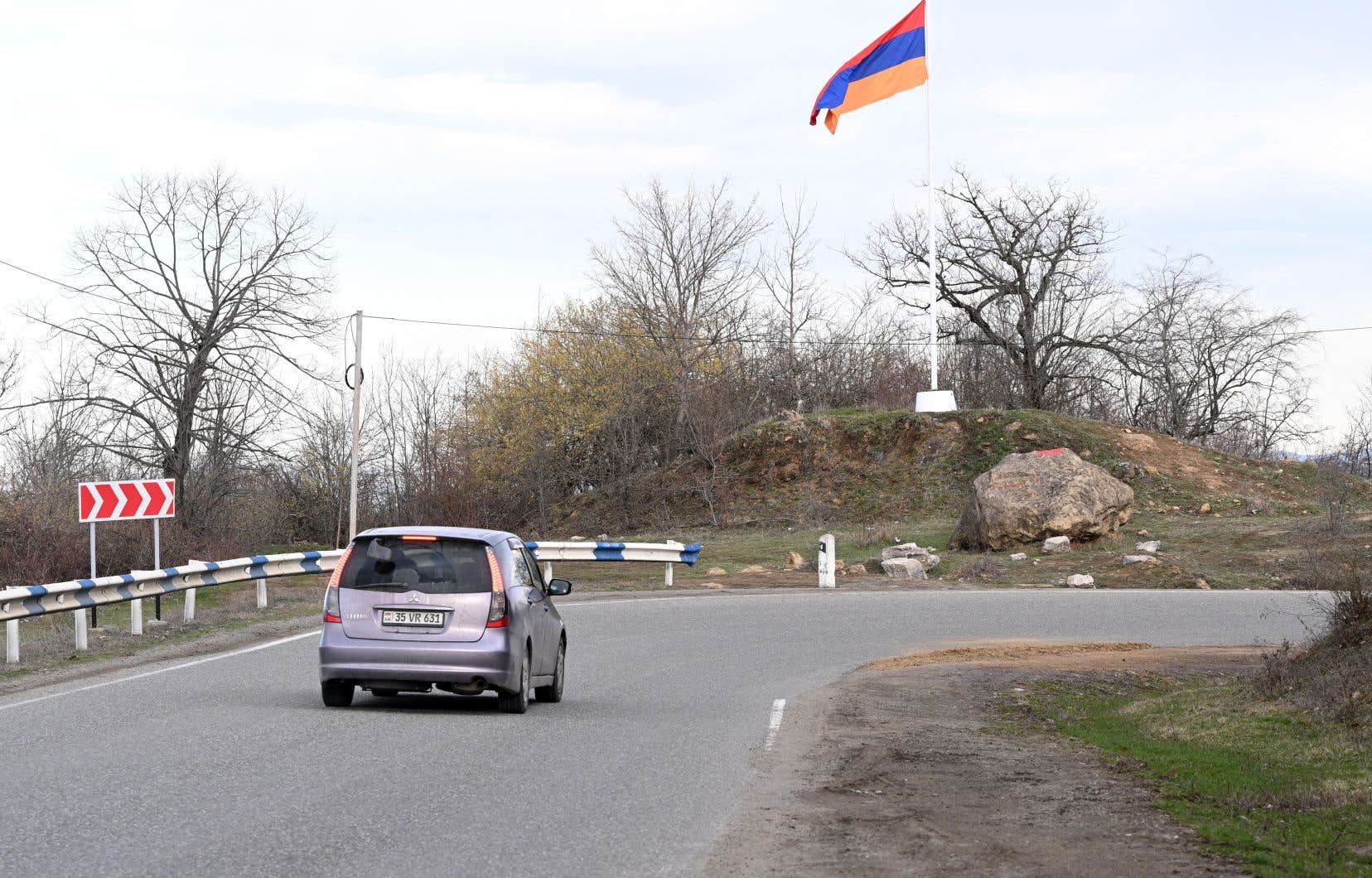Azerbaijani President Ilham Aliyev assured Tuesday that a peace deal with Armenia was “closer than ever” as the two countries began demarcating their shared border after decades of territorial disputes.
The leaders of these two rival states in the Caucasus regularly claim to want a peace treaty resolving these disputes, but the talks remain very difficult and slow. Regular armed incidents also remind us of the extent of tensions.
“We are closer than ever” to a peace agreement, Mr. Aliev said Tuesday during a meeting with analysts, explaining that only the “details” remained to be resolved and that there was “political will” for a settlement.
In recent years, the United States, the European Union and Russia have tried to mediate between Yerevan and Baku, without much success.
While accepting a proposal from Kazakhstan to soon host a meeting of the two countries’ foreign ministers, Aliyev downplayed the need for foreign oversight in talks with Armenia.
“What is currently happening at our border proves that when we are left alone […] we can agree sooner or later,” he said.
Shortly before, the interior ministries of the two countries announced that they had started work to demarcate their common border, an important step.
Baku said expert groups were carrying out “coordinate clarification on the basis of a geodetic study of the terrain.” Yerevan, which confirmed “delimitation works” of the border, excluded “the transfer of any part of Armenia’s sovereign territory”.
Protests in Armenia
Last month, Armenian Prime Minister Nikol Pashinian accepted a demand from Azerbaijan to return four border villages seized by Yerevan’s forces during a war in the 1990s, which forced their Azerbaijani residents to flee.
The decision sparked protests in a border region of hundreds of Armenians, who fear their isolation and that some of their homes could end up under Baku’s control.
On Monday, they briefly blocked the road linking Armenia and Georgia, which passes nearby and constitutes the main link with the outside world for the local population. They also tried to prevent mine clearance work.
And on Tuesday, new protests broke out in several places in Armenia, including near Lake Sevan and the town of Noyemberian.
Mr. Pashinian insisted on the need to resolve border disputes in order to “avoid a new war”.
He called the border demarcation efforts a “significant change on the ground” as these rival countries “now have a border and no longer a line of contact, which is a sign of peace.”
Armenia and Azerbaijan have faced each other in two wars, the first in the 1990s won by Armenia and which left more than 30,000 dead and the second in 2020 won by Azerbaijan and which left more than 6000 dead.
After the Armenian defeat in 2020, Yerevan was forced to cede significant territories in and around Nagorno-Karabakh, a region that Armenians had controlled for around thirty years.
In September 2023, Baku launched a lightning offensive that forced Armenian separatists in Nagorno-Karabakh to capitulate within days and took control of the entire territory.
Russian withdrawal
Russia, which since 2020 had a contingent of several thousand peacekeeping soldiers in Nagorno-Karabakh, began their withdrawal last week, their presence having been rendered obsolete by the Azerbaijani reconquest.
On Saturday, Mr. Pashinian, at odds with Moscow, also announced that Russian border guards, deployed in the region since 1992, would be replaced by Armenian soldiers.
“Russian border guards will withdraw from the region and the border guards of Armenia and Azerbaijan will cooperate to monitor the border,” he said.
Azerbaijan claims several villages administered by Armenia and demands the creation of a corridor through the Armenian region of Siounik in order to have a land connection with its enclave of Nakhitchevan, then with Turkey, its ally.
For its part, Yerevan is demanding the enclave of Artsvashen (Bashkend in Azeri), located in Azerbaijani territory and controlled by Baku since the 1990s, as well as the areas conquered by Azerbaijan over the last three years and which are located within Armenian borders.
